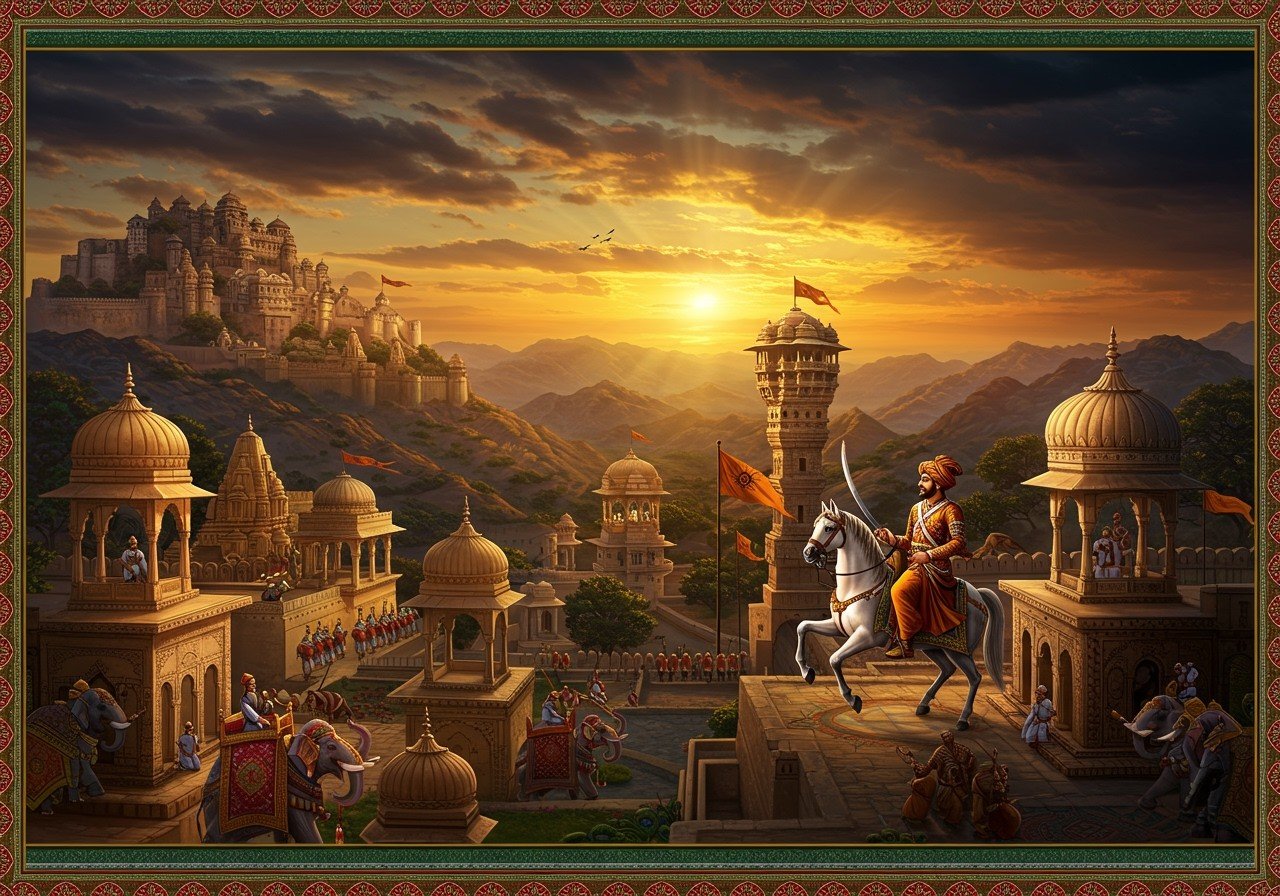
The Mewar Kingdom, a prominent Rajput kingdom in India’s history, boasts a legacy spanning over a millennium. Renowned for its valor, rich cultural heritage, and strategic fortifications, Mewar witnessed periods of both prosperity and adversity. This blog post delves into the comprehensive history of the Mewar Kingdom, exploring its origins, influential rulers, cultural contributions, and eventual decline. Understanding Mewar’s history provides valuable insights into the broader narrative of Indian history, particularly the Rajput era.
Origins and Early History
The Mewar Kingdom traces its roots back to the 8th century AD. Bappa Rawal, a legendary figure, is credited with establishing the dynasty and achieving military victories against Arab incursions. Situated in present-day Rajasthan, Mewar’s terrain significantly influenced its development. The kingdom’s early years involved struggles for power consolidation and conflicts with neighboring kingdoms. Chittorgarh, the initial capital, played a vital role in Mewar’s early history. The lineage of rulers ensured the kingdom’s stability during its formative period, establishing a strong socio-political structure.
The Golden Age of Mewar
The reigns of Rana Kumbha and Maharana Sanga mark Mewar’s Golden Age. Rana Kumbha, celebrated for his architectural achievements, constructed magnificent forts, temples, and palaces. His military prowess resulted in successful campaigns against neighboring states. Maharana Sanga unified Rajput clans and valiantly resisted the Mughal emperor Babur. This period witnessed significant cultural advancements in literature, music, and art. Mewar’s military strategies and alliances during this era laid the foundation for its enduring legacy.
Struggles and Resilience
Mewar faced relentless Mughal invasions, notably the siege of Chittorgarh by Alauddin Khilji and the legendary Jauhar led by Rani Padmini. Continuous wars with the Mughal Empire included battles fought by the courageous Maharana Pratap, who employed guerrilla warfare tactics to reclaim lost territories. These conflicts significantly impacted Mewar’s socio-economic landscape. However, the resilience of the Mewar people and their unwavering commitment to their homeland prevented the kingdom’s complete destruction, aided by strategic retreats and regrouping efforts.
Cultural Contributions
Mewar’s rich cultural heritage significantly contributed to Indian art, architecture, and literature. The distinctive Rajput architectural style is evident in magnificent forts like Chittorgarh and Kumbhalgarh. Mewar’s literary works encompass heroic ballads and poetry. The rulers of Mewar generously patronized the arts, fostering a vibrant cultural environment. Traditional festivals and rituals unique to Mewar further enriched its cultural tapestry. The kingdom played a vital role in preserving Hindu traditions and resisting external cultural influences. Mewar’s crafts, including textiles and metalwork, hold a significant place in Indian cultural history.
The Decline of Mewar
Internal strife and succession disputes weakened the kingdom, marking the beginning of Mewar’s decline. Economic challenges, such as resource depletion from constant warfare, also contributed to its downfall. British colonial expansion further eroded Mewar’s power, ultimately leading to its incorporation into British India. Maharana Fateh Singh’s attempts to modernize the kingdom during his reign faced numerous obstacles. The decline of Mewar reflected the broader decline of Rajput power in India. Post-independence socio-political changes further diminished Mewar’s autonomy.
Legacy and Modern Relevance
The legacy of the Mewar Kingdom endures in contemporary India through preserved historical sites that attract tourists from around the world. Cultural festivals continue to celebrate Mewar’s rich history and traditions. The Mewar royal family actively contributes to social and cultural causes in modern India. Understanding Rajput identity and pride is deeply intertwined with Mewar’s history. Academic research on Mewar provides valuable insights into India’s past. The legacy of Mewar continues to inspire contemporary Indian society, especially in Rajasthan.
FAQs on the Mewar Kingdom
What distinguished the Mewar Kingdom? The Mewar Kingdom stood out as a powerful and culturally rich Rajput kingdom known for its valor and resistance against invaders. Founded by the Guhila dynasty and later ruled by the Sisodia dynasty, it rose to prominence under Bappa Rawal in the 8th century. The kingdom fiercely defended its independence through medieval times, contributing significantly to India’s history.
What caused the decline of the Mewar Kingdom? Several factors contributed to the decline of Mewar. Internal conflicts and succession disputes weakened the kingdom from within. The continuous wars against invaders, particularly the Mughals, depleted resources and took a toll on the kingdom’s stability. Finally, the rise of British colonial power led to Mewar’s eventual incorporation into British India, further diminishing its autonomy.
Embrace the Spirit of Mewar with Poojn.in
Inspired by the rich cultural and spiritual heritage of the Mewar Kingdom? Poojn.in, India’s leading online store for cultural and religious goods, offers a wide selection of products to enhance your spiritual practices. Discover authentic puja items, handcrafted statues, and traditional décor that reflect the artistic legacy of Mewar.
- Marble Statues of Deities: Bring home beautifully crafted marble statues of revered deities, reminiscent of the idols worshipped in Mewar’s grand temples. Poojn.in offers a diverse collection of statues depicting various forms of Hindu gods and goddesses, perfect for creating a sacred space in your home. These statues are crafted with intricate details and high-quality materials.
- Incense and Dhoop: Enhance your spiritual atmosphere with traditional incense and dhoop, evoking the fragrant offerings made in Mewar’s ancient rituals. Poojn.in provides a wide variety of incense sticks and dhoop cones made with natural ingredients and traditional recipes. These aromatic offerings can create a serene and meditative environment.
- Puja Thalis and Accessories: Perform your daily puja with exquisite thalis and accessories, crafted with the same attention to detail as the ceremonial objects used in Mewar’s royal rituals. Poojn.in offers a wide selection of puja thalis, bells, lamps, and other essential items, all made with high-quality materials and traditional designs. These products can help you perform your daily rituals with reverence and authenticity.
Visit Poojn.in today and explore our extensive collection. Experience the rich heritage of Mewar through our authentic products, carefully curated to bring the spirit of this historical kingdom into your home.


